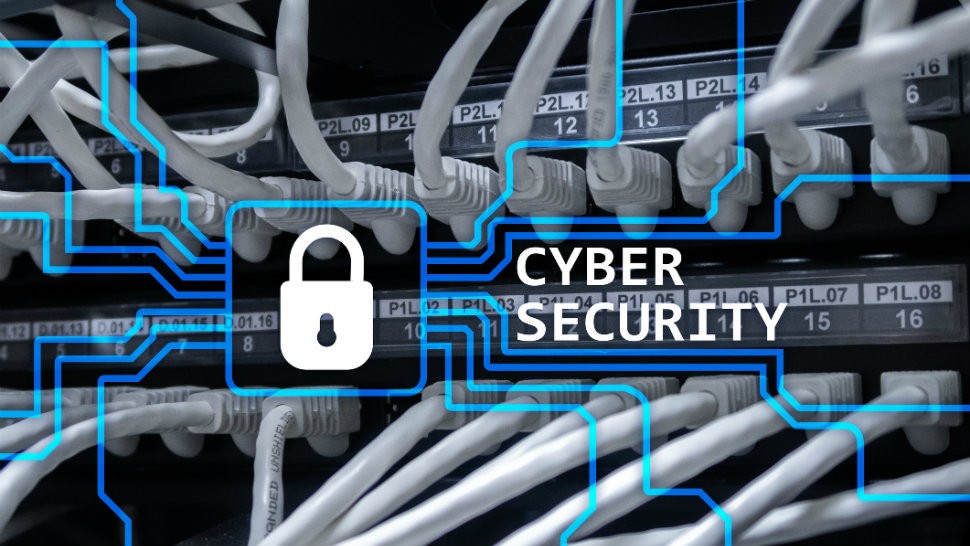Contents
The Importance of Reporting and Recovering from a Cybercrime Incident
As technology advances, so do the methods used by cybercriminals to intrude into our digital lives. Unfortunately, many people underestimate the damage that can be done by these criminals or don’t realize they’ve been victimized until it’s too late. The reality is that cybercrime can have devastating consequences, including financial losses, identity theft, and reputational damage.
The longer you delay reporting and recovering from a cybercrime incident, the more severe these consequences become. One of the biggest dangers of not taking immediate action after being hit by a cyberattack is that criminals can continue to access your personal information without your knowledge.
This could lead to more serious crimes such as fraud or blackmailing. Another potential consequence is long-term damage to your credit score if your bank accounts are tampered with or funds are stolen.
This could make it difficult for you to qualify for loans in the future. Moreover, if you’re a business owner who has suffered data breaches, clients would lose confidence in your ability to protect their sensitive information.
It may take years before trust can be rebuilt and business resumes as normal. Therefore, it’s essential that you know how to report and recover from a cybercrime incident in case you become a victim.
It’s important not only for minimizing damages but also for preventing similar incidents in the future. In this article, we’ll guide you through key steps on how to report and recover from a cybercrime incident so that you can minimize damages caused by these attacks.
Identifying a Cybercrime Incident
Before anyone can report a cybercrime incident, they need to know what exactly it constitutes. A cybercrime is basically any illegal activity that involves the use of a computer or network. Cybercrime is not limited to theft or stealing of information but any malicious activity committed online that can cause harm to individuals or organizations.
What Constitutes a Cybercrime Incident?
Cybercrime is an umbrella term that comprises various types of offences such as hacking, identity theft, phishing scams, denial-of-service attacks, ransomware attacks and malware infections. Understanding these types of crimes can help you identify when you are being targeted by cybercriminals.
Hacking
Hacking refers to the unauthorized access and manipulation of computer systems and networks. This type of crime often involves bypassing security protocols to gain access to sensitive data.
Malware Infections
A malware infection usually occurs when individuals unknowingly download malicious software onto their computers or mobile devices. These malicious programs are designed to steal personal information, spy on users’ activities or take control over devices.
Phishing Scams
Phishing scams are fraudulent attempts by cybercriminals who trick individuals into revealing their sensitive information like login credentials and banking details through email or instant messaging service.
Ransomware Attacks
Ransomware attacks are where attackers restrict access to user data until a ransom is paid for its release.
Denial-of-service Attacks (DoS)
A Denial-of-service attack is an attempt by attackers who flood a server with traffic until it crashes and becomes unavailable for legitimate users. Understanding what constitutes a cybercrime incident is crucial when it comes to reporting and recovering from such incidents.
Knowing the different types of cybercrime attacks and what to look out for can help you avoid becoming a victim of cybercriminals. In the next section, I will discuss why reporting a cybercrime incident is essential.
Reporting the Incident
Why it’s important to report the incident to law enforcement
Reporting a cybercrime incident to law enforcement should be done as soon as possible. It is crucial because the information gathered by law enforcement agencies can be used to investigate and prosecute the criminals responsible for the crime. Additionally, if your personal information was stolen or compromised during the incident, it’s important to report it so that you can take steps towards protecting your identity and preventing further damage.
By reporting a cybercrime incident, you’re not only helping yourself, but also helping others who may have been or will be targeted by the same criminals. Reporting incidents helps law enforcement agencies build up data on cyber attacks and develop strategies to stop them from happening in the future.
Provide steps on how to report the incident
Step 1: Document everything Before reporting an incident, document everything you know about it.
This includes any suspicious activity or messages received, when and how you noticed something was wrong, and any damages caused by the incident.
Step 2: Contact local law enforcement
If you suspect or confirm that a crime has been committed against you through a computer network or device, contact your local police department immediately. Explain that you are reporting an online crime and provide them with all of the information that you’ve documented.
Step 3: Contact federal agencies If your case is serious enough (e.g., if there is potential harm to national security), then FBI’s Internet Crime Complaint Center (IC3) should be contacted in addition to your local police department.
You can submit an online complaint form on their website for assistance with internet-related crimes.
Step 4: Notify other relevant parties
Apart from contacting law enforcement authorities, consider notifying other parties that may have been affected by this breach such as customers or business partners.
Step 5: Maintain Records
Make sure to keep detailed records of any people you contact, correspondence exchanged, and actions taken. This is important if you need to follow up or provide additional information at a later time.
Reporting a cybercrime incident can be intimidating, but it’s important to take action quickly. The sooner you report the incident, the better chance law enforcement agencies have of catching the criminal and preventing future incidents from occurring.
Recovering from the Incident
Changing Passwords
One of the first steps you should take after reporting a cybercrime incident is changing all your passwords. This includes passwords for your email, social media accounts, online banking, and any other account that may have been compromised. Make sure to create strong passwords that are unique for each account.
Use a combination of upper and lowercase letters, numbers, and symbols. Avoid using common words or phrases that can be easily guessed.
It’s also important to frequently change your passwords even if you haven’t experienced a cybercrime incident. It’s recommended to change your password every three months as an added security measure.
Contacting Financial Institutions
If you believe your financial information has been compromised during the cybercrime incident, it’s crucial to contact your financial institutions immediately. This includes banks, credit card companies, investment accounts, and any other institution where you hold money or investments.
Explain the situation in detail and follow their instructions on how to proceed. They may advise you to temporarily freeze or close certain accounts or issue new credit cards.
Checking Credit Reports
As part of recovering from a cybercrime incident, it’s essential to check your credit reports regularly. This will help identify any unauthorized activity that may have occurred on your accounts due to the cybercrime incident. You’re entitled by law to one free credit report per year from each of the three major credit bureaus: Equifax, Experian, and TransUnion.
Review each report thoroughly for any suspicious activity such as new accounts opened in your name without authorization. If you notice anything unusual on any of the reports or suspect identity theft has occurred; contact the relevant bureau(s) immediately so they can investigate further and put a fraud alert on your file.
Installing Antivirus Software
One way to protect yourself from future cybercrime incidents is to install antivirus software on your computer and other devices. Antivirus software scans your device regularly for any malicious software (malware) that may have been installed without your knowledge. Make sure to choose a reputable antivirus program and enable automatic updates so it’s always up-to-date with the latest virus definitions.
Backing Up Data
Last but not least, backing up your data is another important step in recovering from a cybercrime incident. A backup of all your important files, documents, and photos will be a lifesaver if anything happens to your primary device or storage system during the cybercrime incident. You can back up data using various methods such as external hard drives, cloud storage services like Google Drive or Dropbox, or physical copies on DVDs or USB drives.
It’s recommended to back up data regularly and keep copies in multiple locations for added security. By taking these steps after reporting a cybercrime incident; changing passwords, contacting financial institutions, checking credit reports, installing antivirus software and backing up data; you can minimize the damage caused by the incident and protect yourself from future incidents.
Additional Tips for Preventing Future Incidents
Avoid clicking on suspicious links or downloading unknown attachments
One of the most common ways hackers gain access to your personal information is through phishing attacks. Phishing attacks usually involve emails that look like they come from legitimate sources, such as your bank or social media accounts.
These emails contain links or attachments that, when clicked on, can install malware on your device. To avoid falling prey to these attacks, it’s important to always be cautious when opening emails.
If you receive an email that looks suspicious, do not click on any links or download any attachments. Instead, hover over the link to see if it leads to a legitimate website and carefully examine the sender’s email address before opening any attachments.
Regularly updating software and operating systems
Outdated software and operating systems can often have security vulnerabilities that hackers can exploit. To keep your devices secure, make sure you regularly update all software and operating systems.
You can set up automatic updates for many programs so you don’t have to remember to do it manually. It’s also important to note that some older devices may no longer receive updates, so it may be time for an upgrade if this is the case with your device.
Using strong passwords and two-factor authentication
Using strong passwords can greatly reduce the chances of someone gaining access to your accounts without permission. Make sure your passwords are unique and contain a combination of upper- and lowercase letters, numbers, and symbols.
In addition to using strong passwords, consider enabling two-factor authentication (2FA) wherever possible. 2FA adds an extra layer of security by requiring a code in addition to your password when logging into an account.
Some popular apps such as Facebook, Google, and Twitter offer 2FA options. It’s also important to remember that if you use the same password for multiple accounts, a hacker only needs to figure out one password to gain access to all your accounts.
Conclusion
By following these additional tips for preventing future cybercrime incidents, you can greatly reduce your risk of falling prey to hackers. Always be cautious when opening emails, regularly update all software and operating systems, and use strong passwords and two-factor authentication. These simple steps can go a long way in keeping you safe from cybercrime incidents.
Remember that prevention is key when it comes to cybersecurity. Don’t wait until it’s too late; take action now to protect yourself from potential threats.
Conclusion:
In this article, we’ve covered the important topics of reporting and recovering from a cybercrime incident. Cybercrime is a growing threat that affects people and businesses of all sizes and can cause significant damage, both financially and personally. In order to minimize the damage caused by an incident, it’s important to take quick action.
We started off by identifying what constitutes a cybercrime incident, which includes any illegal activity that involves the use of a computer or network. We also provided examples of common types of cybercrime incidents such as phishing scams, ransomware attacks, and identity theft.
Next, we discussed why it’s crucial to report the incident to law enforcement as soon as possible. Reporting not only helps you recover your losses but also helps prevent future incidents from occurring.
We then outlined steps to take when recovering from an incident. This includes changing passwords for all accounts associated with your personal information or financials.
You should contact financial institutions such as banks or credit card companies immediately and let them know about the incident so they can monitor your account for suspicious activity. Checking credit reports regularly can also help identify any unauthorized activities under your name.
It’s advisable to install antivirus software that will help keep your computer safe in the future. We offered additional tips on preventing future incidents such as avoiding suspicious links or downloading unknown attachments.
Regularly updating software and operating systems is key in keeping them secure from potential threats. Strong passwords with two-factor authentication are an effective way to prevent unauthorized access.
Taking quick action is crucial in minimizing damage caused by a cybercrime incident. Being proactive in protecting yourself through prevention tactics like updating software and having strong passwords can go a long way in safeguarding ourselves online.











